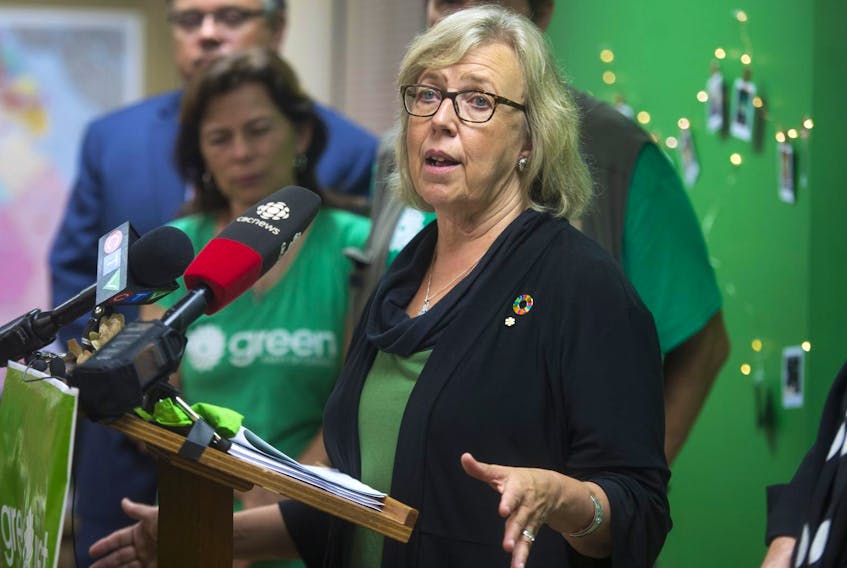The province’s new environmental targets need to guarantee an end to Nova Scotia’s outdated reliance on coal-burning power and commit to 100 per cent renewable-based electricity by 2030, says Green Party leader Elizabeth May.
The Sustainable Development Goals Act should also include a commitment to shut down Donkin coal mine as early as possible, she said.
“Nobody should be mining coal anymore," said May, arguing it's the province's shared responsibility to help transition those workers into more sustainable green jobs.
"The goal should be on decarbonizing the electricity grid by 2030. The act should make clear that Nova Scotia should shut down its coal firepower plants as quickly as possible.”
The act, which was introduced by Environment Minister Gordon Wilson last Thursday and passed into law on Wednesday, aims to reduce greenhouse gas emissions by 53 per cent below 2005 levels by 2030 and move the province to a net-zero carbon footprint by 2050.
The province's emission goals fall short of what the science says is needed to keep global heating under 1.5 degrees. The Greens' federal target is 60 per cent below 2005 levels, but May credits the province for legislating hard caps.
"This is breaking out of the pack and much closer to what needs to be done," May said, adding that the federal government has yet to enact emission cutting legislation. “There’s quite a lot about the Nova Scotia act that should be better known across Canada and something useful to push in the federal Parliament where we have no legislation at all to push for climate action.”
Currently 55 per cent of the electricity produced by Nova Scotia Power comes from coal and almost 30 per cent from renewable sources. The Nova Scotia government appears keen on tidal energy, passing legislation this session aimed at further development in the Bay of Fundy. But there's plenty of other renewable options to tap into, said May.
“Open up the market and ask for a request for proposals for renewable energy, whether it’s geothermal, wind, solar or tidal. Solar energy has tremendous potential if we didn’t have the restrictions on purchasing renewables. The whole picture of how we promote energy production is out of whack with what we can really do with renewables."
While Wilson said the province is working on a coal reduction strategy he’s offered no indication that the government is moving to ban coal-fired production. Producing inexpensive renewable power is doable, said May, pointing to Alberta’s plan to produce solar energy at four cents a kilowatt-hour.
She said the act ought to also include significant funding for grants subsidizing renewable electricity sources for homes and businesses.
But like many Nova Scotians, May is questioning how the province will hit its targets without a clear pathway to get there laid out in the act. The legislation should include five-year emission targets to ensure the province meets the 2030 goal, said May.
“We certainly understand why so many Nova Scotians have been critical of that. Because it’s easy for the government to look at 2030 and say, 'well, I’m not running for re-election then and I’m never going to be held accountable.'"
The legislation calls for a new climate change strategy to be in place by the end of next year, following extensive public consultation. The province is pledging that more environmental targets will come in that document. The new act is also promising a fund to help communities fight climate change while growing the green economy.
NDP Leader Gary Burrill has maintained the act falls short in the face of a deepening climate crisis. Apart from defining the province’s emissions goals, the legislation is largely hollow, he said on Wednesday, the last day of the legislature's fall session.
"The lack of any other real hard targets and goals in the legislation is deeply concerning,” said Burrill. “To move all other environmental targets out of the law and into regulations, where only cabinet will approve them, is a major mistake. Something as important as environmental protection targets should be subject to public scrutiny and democratic debate.”
Like the NDP, the Green Party leader is calling for the act to incorporate some of the 17 United Nations Sustainable Development Goals, ranging from eliminating poverty to gender equity.









